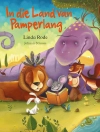In Nathaniel Hawthorne’s 'Wonder Book, ’ the author masterfully weaves classic mythology with enchanting storytelling, inviting young readers into a realm of adventure and moral lessons. Through a collection of retellings rooted in Greek mythology, Hawthorne employs a rich, imaginative prose style marked by his characteristic vivid descriptions and deep psychological insight. The book stands as a testament to the intertwining of folklore and morality, showcasing the age-old themes of human experience, identity, and the struggle against fate, all while being accessible to a juvenile audience. Hawthorne, a figure deeply embedded in the American Romantic movement, cultivated his literary talents against the backdrop of transcendentalism and a keen interest in the past. His fascination with moral complexity and the human condition, depicted in works such as 'The Scarlet Letter, ’ is reflected in his reinterpretation of these ancient tales, allowing him to explore ethical dilemmas while retaining a childlike wonder. This duality points to his intention of enriching the young minds of his era, enriching the broader literary landscape. 'Wonder Book’ is highly recommended for readers of all ages who seek to rediscover the profound lessons contained in mythology. It serves not only as an engaging read for children but also offers adults an opportunity to reflect upon the timeless moral inquiries embedded within these stories, making it a significant contribution to American literature.
O autorze
Nathaniel Hawthorne (1804–1864) remains one of the most significant figures in the annals of American literature, celebrated for his rich use of symbol and allegory, and his profound exploration of moral and historical themes. Born in Salem, Massachusetts, a town indelibly marked by its 17th-century witch trials, Hawthorne’s lineage included a judge responsible for the prosecution during those trials, a fact that left a lasting imprint on the writer’s psyche and works (Wineapple, 2003). Hawthorne graduated from Bowdoin College in 1825 and embarked on a writing career that eventually led to his recognition as a central figure of the American Romantic movement. His novel 'The Scarlet Letter’ (1850) is lauded for its narrative complexity and deep psychological insight, qualities hallmark to Hawthorne’s literary style. In 'The House of the Seven Gables’ (1851), he further exemplifies his capacity for delving into themes of guilt, retribution, and atonement. One of his less cited but notable works is 'A Wonder-Book for Girls and Boys’ (1851), retitled simply as 'Wonder Book’, in which Hawthorne retells various Greek myths for children with his characteristic attention to moral lessons and the darker aspects of human nature (Hawthorne, 1851). The tales are creatively rendered, making them accessible to a younger audience while maintaining the literary sophistication esteemed in his writings. Hawthorne’s influence on literature continues, as his works contribute to the canon of early American fiction and offer invaluable insight into the cultural and psychological fabric of his time.












